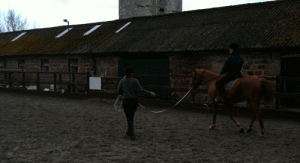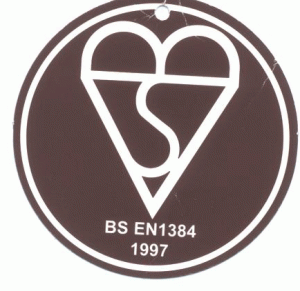Horse riding basics – how to sit correctly

Horse riding, the art of keeping a horse between you and the ground, has many important aspects, including sitting corectly.
General position
The basic position for walk and halt is sit up straight and tall, keep your elbows in a diagonal line with the horses mouth (your arms should never be straight), keep your heels down. keep the ball of your foot in the stirrup,ensure your shoulder, hip and heel are in a straight line.
Hands
When riding the position of your hands is important. How you hold the reins is also important, you should be able to feel a horses mouth without jabbing or pulling at the reins. Your instructer will tell you how to hold the reins correctly, but remember, always keep your thumbs on top and don’t rest your hands on the saddle or the horses neck.
Stirrups
Stirrups need to be different lengths for different activities. Dressage is done with long stirrups and requires confident riders with a deep seat.
For beginners, stirrups should be as long as your arm from finger tip to arm pit, to give a general idea.
Jumping position
When you start to jump your instructor will explain every thing you need to know but it is good to come prepared.
Approach
The way you approach a jump is very important. Keep your heels down, look ahead, keep your normal position and ride positively.
Take off
As you take off the only change in your position should be that you fold forward at your hips. Keep your heels down!
Moment of suspension
Keep the same position as above.
Landing
As you land, keep your heels down, they are your anchor, and sit up so that as you make the getaway, you are back in your usual position.
To achieve a good seat there are some exercises you can do. These include riding without stirrups and practicing sitting still (although this will most likely not be done in your first lesson).




Recent Comments